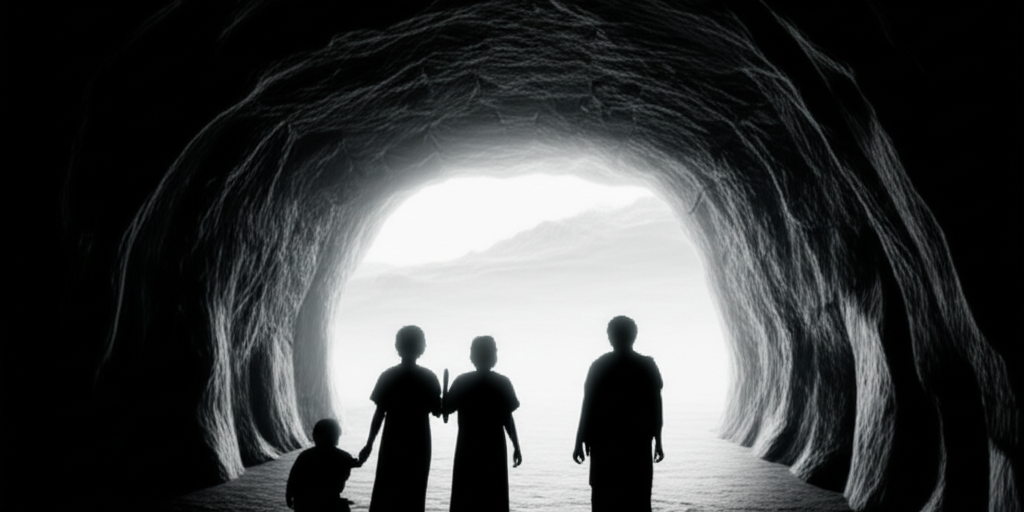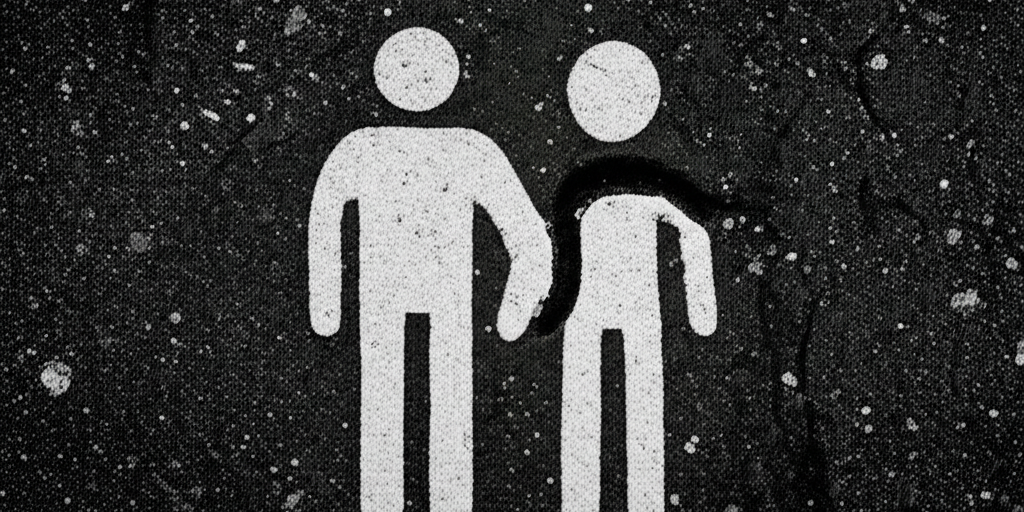Unveiling Reality: A Journey Through Plato's Allegory of the Cave

Unveiling Reality: A Journey Through Plato's Allegory of the Cave
Meta Description
Explore Plato's Allegory of the Cave, a profound philosophical tale from The Republic that illustrates the nature of reality, perception, and enlightenment. Discover its enduring relevance today.
Introduction
Imagine a world where your entire reality is defined by shadows dancing on a wall. What if everything you've ever known, seen, or believed to be true was merely a fleeting, distorted image? This captivating thought experiment lies at the heart of Plato's Allegory of the Cave, one of the most enduring and influential philosophical narratives in Western thought. Penned by the ancient Greek philosopher Plato around 380 BCE in his seminal work The Republic, the allegory is a dialogue between his mentor Socrates and brother Glaucon. It offers a powerful metaphor for contrasting reality with our perception of it, exploring the profound impact of education (or the lack thereof) on our understanding of the world. Join us as we journey into the depths of the cave and discover the timeless wisdom it holds.
The Darkened World: A Summary of the Allegory
Plato invites us to visualize a group of people who have lived their entire lives chained within a deep, underground cave. From infancy, their legs and necks are bound, forcing them to gaze straight ahead at the cave's inner wall. They cannot turn their heads to see each other, nor the entrance of the cave.
Behind the prisoners, a fire blazes, casting light into the cave. Between the fire and the prisoners, there's a raised walkway with a low wall, similar to what puppeteers use. Along this wall, other people (the "puppeteers") carry various objects—statues of people, animals, and other things—which are invisible to the chained prisoners. As these objects pass, their shadows are projected onto the wall that the prisoners face.
To these prisoners, who have known nothing else, these flickering shadows are their entire reality. They name them, discuss them, and believe the echoes of sounds from the puppeteers come directly from the shadows themselves. Their visible world is their whole world, and they have no knowledge of anything beyond it.
The allegory then poses a crucial question: What if one of these prisoners were suddenly freed?
The Painful Ascent: The Journey to Enlightenment
Imagine the struggle of the freed prisoner. Unshackled, they would initially experience pain and confusion as they turn to face the fire, their eyes unaccustomed to the glare. They would see the objects casting the shadows and realize that what they previously believed to be real were mere illusions.
If this freed individual were then forcibly dragged up the steep and arduous path out of the cave and into the blinding light of the sun, their eyes would be nearly overwhelmed. It would take time for them to adjust to the intensity of natural light. Gradually, they would begin to discern reflections in water, then real objects, and finally, they would be able to gaze upon the sun itself, recognizing it as the source of light and life. This outside world would be perceived as infinitely more real than the shadowed existence they left behind.
The Return to the Cave: The Burden of Knowledge
Having experienced true reality, the enlightened prisoner would feel compelled to return to the cave to share their newfound knowledge with their former companions. However, upon re-entering the darkness, their eyes, now accustomed to the sun's brilliance, would be temporarily blinded. They would struggle to see the familiar shadows, appearing clumsy and foolish to those who remained chained.
The prisoners who never left the cave would likely mock and ridicule the returning individual, believing that the journey outside had harmed them and that the "truth" they spoke of was dangerous and not worth seeking. They might even react with hostility, preferring the comfort and familiarity of their perceived reality over the unsettling revelation of a greater truth, potentially even killing anyone who tried to free them.
Unpacking the Symbolism: What the Allegory Means
Plato's Allegory of the Cave is rich with symbolism, offering insights into his philosophical ideas:
- The Cave: Represents the visible world, the realm of our everyday sensory experience, which Plato considers a "weaker" world and not a place to obtain true knowledge. It signifies a limited perception of reality.
- The Prisoners: Symbolize humanity, or more specifically, those who are "untutored in philosophy" and are bound by their worldly, temporal existence, mistaking sensory perceptions for ultimate reality.
- The Shadows: Represent the illusions and superficial appearances that we often mistake for reality. They are opinions, beliefs, and perceptions based on incomplete information or superficial understanding.
- The Fire: Often interpreted as the sun within the cave, providing the light for the shadows, and representing human-made constructs or sources of "truth" within the limited reality of the cave.
- The Objects/Puppeteers: Symbolize the real objects and concepts that cast the shadows, representing the underlying truths or "Forms" that are hidden from the prisoners' direct view.
- The Freed Prisoner: Represents the philosopher, or anyone who seeks true knowledge and enlightenment. This individual undertakes the arduous journey of intellectual and spiritual awakening.
- The Ascent Out of the Cave: Signifies the arduous process of education and intellectual liberation, the journey of the soul from the world of senses to the "intelligible realm" of ideas and true knowledge. It's a path that requires effort and can be painful.
- The Sun: In the allegory, the sun outside the cave represents the "Form of the Good," the highest and most fundamental kind of reality in Plato's Theory of Forms. It illuminates all other Forms and is the ultimate object of philosophical understanding.
- The Return: Highlights the philosopher's duty to share their understanding and guide others towards enlightenment, even if met with resistance or hostility.
Plato's Theory of Forms: The Philosophical Backbone
The Allegory of the Cave is inextricably linked to Plato's Theory of Forms (or Theory of Ideas). This theory posits that the physical world we perceive through our senses is not the ultimate reality. Instead, there exists an immaterial, perfect, and unchanging "intelligible realm" of Forms (or Ideas) that are the true essence of all things.
For example, while we see many individual chairs in the physical world, Plato would argue there's an "ideal" Form of a Chair—a perfect, abstract concept—of which all physical chairs are mere imperfect imitations or shadows. True knowledge, for Plato, comes from grasping these Forms with our minds, not from relying on our often deceptive senses. The journey out of the cave, then, is the journey from perceiving the shadows (physical objects) to comprehending the Forms (true reality).
The Enduring Relevance in the Modern World
Despite being thousands of years old, Plato's Allegory of the Cave remains strikingly relevant in our contemporary society, offering a powerful lens through which to examine various aspects of modern life.
- Media and Misinformation: In an age of pervasive social media, fake news, and curated online realities, the allegory serves as a potent reminder that what we see and hear may not always be the full truth. Like the prisoners, we can be confined to "echo chambers" and "filter bubbles" that reinforce existing beliefs, shielding us from diverse perspectives and hindering our search for objective truth.
- Education and Critical Thinking: The allegory underscores the transformative power of education and the importance of critical thinking. It highlights how limited exposure to different viewpoints can restrict our understanding and prevent us from discerning deeper realities. True education involves guiding individuals to question their assumptions and seek knowledge beyond superficial appearances.
- Personal Growth and Self-Limiting Beliefs: On a personal level, the cave can symbolize our own "mental caves" – the limiting beliefs, fears, and conditioned patterns of thinking that shape our perception of reality. We often mistake these ingrained narratives for truth, confining ourselves to narrow perspectives. The journey out of the cave can be seen as the challenging, yet rewarding, process of self-discovery and overcoming psychological limitations.
- Societal Resistance to Truth: The allegory's depiction of the prisoners' resistance to the freed individual resonates with how new ideas, scientific discoveries, or uncomfortable truths are often met with skepticism, ridicule, or even hostility by those who prefer to remain in their "known" realities.
- Virtual Realities and Hyperreality: With the rise of virtual environments, augmented reality, and artificial intelligence, the allegory prompts us to consider how these simulated experiences might create new "caves," blurring the lines between reality and illusion and potentially distancing us from authentic experiences and relationships.
Conclusion
Plato's Allegory of the Cave is far more than a simple story; it's a timeless philosophical cornerstone that challenges us to critically examine our perceptions of reality, the nature of knowledge, and the transformative power of enlightenment. It urges us to question what we take for granted, to seek deeper truths beyond the shadows on the wall, and to understand that the path to genuine understanding can be both painful and liberating. As we navigate an increasingly complex world, this ancient tale continues to serve as a powerful metaphor, reminding us to always strive for intellectual liberation and to look beyond the immediate appearances to uncover the fuller picture of reality.

